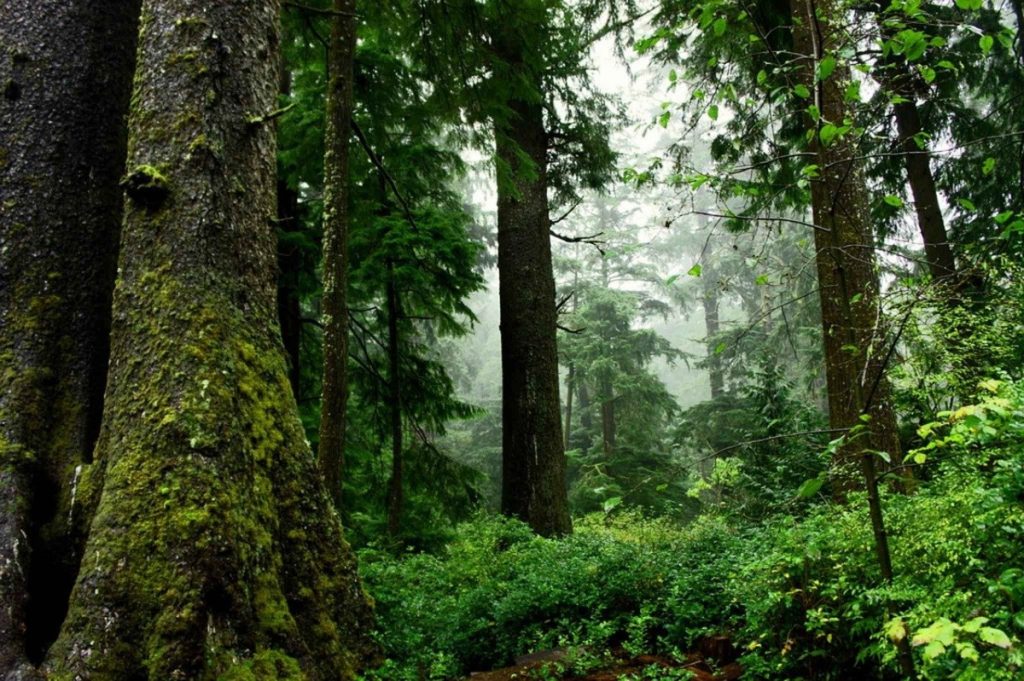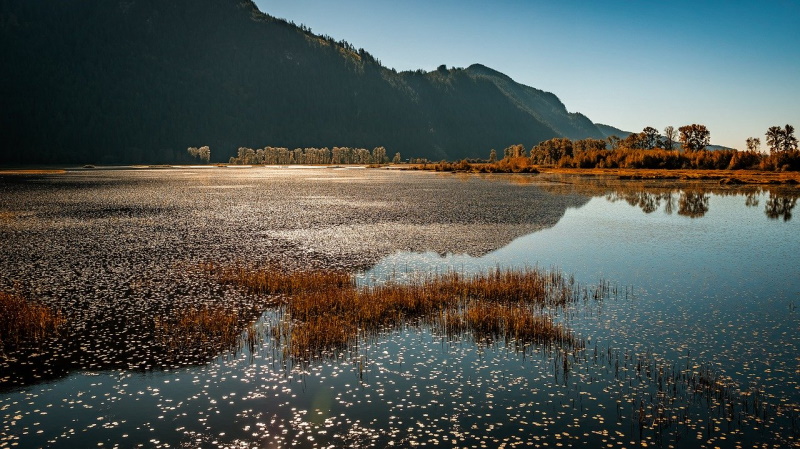Also known as bushwhacking, off-trail hiking involves trekking through dense forests, bushes, and undergrowth. Learning how to bushwhack confidently is an important skill to master, especially if you are an ardent backpacker. Apart from giving you an opportunity to explore less-traversed terrains, bushwhacking can also prove to be a lifesaver, in case you lose your bearings when you are hiking in the wilderness, and you have to figure your way back to safety. If you are new to off-trail hiking, here are some tips that can help to improve your skills.
Pre-Trip Preparation
The success of your off-trail hiking trip will depend on how well you prepare for it. After all, you will be hiking in remote areas and unfamiliar routes, where there are no markers, clear paths or anything to guide you. Therefore, proper pre-trip preparation is vital. First, ensure you gather as much information as you can, about the entire route that you will be traversing. You need to know the average length of the hike, prevailing weather conditions, trail conditions as well as the difficulty of the terrain. This information will help you to determine the type of gear that you will carry as well as whether you will need any permits to hike in those areas since most forest parks and wilderness areas don’t allow off-trail hiking. Also, make sure you prepare yourself mentally and physically. Off-trail hiking is a highly demanding activity. Your body should be physically fit to handle the heavy demands that come with such an adventure. Exercises like squats, mountain climbing, lunges, swimming, and cardio will help to get your body in shape, in readiness for this demanding task.
Gear Tips
Your choice of gear for the trip will depend on where you will be doing the hike, the route difficulty, how long you plan to be there and the predicted weather conditions. For instance, if you only intend to hike for a day or two, then you will definitely carry fewer supplies compared to someone who will be hiking for weeks or even months. But in general, you will need a long-sleeve shirt as well as a pair of long pants during your trip, to avoid scratches or other soft tissue injuries. A wide-brimmed hat will also help to protect your forehead and face from getting scratched.
You should pack your backpack in such a way that all your supplies should go inside the bag and nothing should be hanging on the outside. Anything that is hanging loose might get caught in the undergrowth and then ripped off. On the same note, you should use a backpack that doesn’t have exterior mesh pockets. Also, leave your best outdoor clothing at home, as there is a high chance that they will be ripped up by the thorns and branches.
Your compass should be attached to your body at all times. Also, remember to bring at least two copies of a paper map during your hike. One should be in your pants pocket and the other should be in your backpack. You might end up losing or damaging one. If you will be hiking during the hunting season, it’s highly advisable to wear blaze orange, to keep you visible at all times.
Always bring some additional supplies, including food and water. As you might probably know, conditions out there can change any time, and you might be forced to take a longer route than you had planned. Circumstances may also force you to spend the night out in the wild. Therefore, you should always be ready for such conditions.
Your boots are the single most important part of your hiking gear. During your hiking trip, you will have to scramble up steep terrains, cross rivers and streams, tackle rocky outcroppings, climb trees, wade through muddy swamps and come across other challenging conditions. Your hiking boots should be comfortable, sturdy enough and well equipped to tackle whatever you come across.
On the Trail
When you are on the trail, you should start your bushwhacking from an established location like a popular landmark, a road, a known elevation, or a trail. If possible, you should use rivers, streams, ridgelines and other similar features to plan your route and speed up your progress, so that you don’t rely too much on your maps and compass. Always follow the path of least-resistance to save time and energy. Avoid routes that have dense forests, marshes, boulder fields or such challenging terrains. You’d rather take a longer route than walk through such obstacles. Also, make sure you check your map and compass constantly, to ensure you are on the right track.
Safety
While bushwhacking can provide an exciting and thrilling adventure, it also comes with numerous safety risks. During your off-trail hiking trip, you will be traversing places and areas that you are not familiar with, deep into the wilderness. Therefore, if you are not careful, you might end up getting lost in those remote areas. Whether you are going for a backpacking trip or a single day hike, safety should always be a priority.
If you will be hiking off-trail for the first time, you should not do it alone. In case something happens to you when you are out there in the wild, you will have someone who can help you. Also, make sure you notify your friends and family about your trip. They should know where you are going and when you expect to be back. You should also leave behind contact information about the ranger station that manages the area that you are going for your trip.
Second, you should always hike within your limitations. As much as challenging yourself to unlock new milestones is great, there is nothing wrong with turning around, especially if you feel your body is not up to the task. Going back home safe should always be your priority. There is no need of risking a serious injury or hiking when you are ill, just to prove yourself to your colleagues or yourself.
Third, try as much as you can to keep up with your hiking group and avoid being separated from the team. If you are the least experienced member of the team, fatigue, and lack of proper physical conditioning might slow you down. And there is no need of over-exerting yourself, as you might end up with injuries. In case you are too tired to continue, notify the person closest to you so that they can inform the rest of the team. Ideally, there should be an experienced hiker ahead and behind you, to ensure you are not left behind.
Fourth, avoid bushwhacking in the dark. As noted earlier, off-trail hiking involves trekking in unmarked areas. Therefore, if you are trekking in the dark, the chances of getting lost in the bush are quite high. Furthermore, you might even be attacked by wild animals. In case you didn’t manage to reach your campsite on time, you should create a makeshift shelter for the night and then continue with your journey the following day.
Fifth, stay away from wild animals as much as possible. Each wild animal, whether it’s a snake, a bear, a mountain lion or a snake, has its own specific behavior whenever it encounters a human being. But one thing that remains constant is that most of them are quite aggressive whenever they are provoked or antagonized. As much as you would love to capture some photos, make sure you do it from a safe distance. Also, ensure you heed warning signs. They are there for a reason. If you opt to ignore these signs, you should always remember that you are doing so at your own risk, the consequences may be dire.
Conserving the Environment
Off-trail hiking means trekking in areas, ecosystems, or terrains that are rarely disrupted. Therefore, whenever you go for a hiking trip in these areas, you should do it in a way that ensures minimal impact and human damage, since they provide a home, protection, and source of food to different types of organisms. So, how can you minimize damage to these ecosystems during your hike?
- Avoid littering at all costs. Considering that you will be hiking in unmarked areas, you might be tempted to mark routes using bits of plastic paper bags or other materials. While this might make it easier for other people to follow that route, you should not do it. After all, the mystery, challenge, and difficulty of tackling these areas is part of the fun.
- Keep your travel party small: While some areas can withstand a sizeable amount of traffic without any noticeable damage, others are highly vulnerable. Therefore, if your hiking route traverses delicate terrain, then you should keep the travel party as small as possible. However, this is not to mean that you should go on the trip alone. Also, you should avoid walking on fragile soils, unstable rock surfaces, and molasses.
- Don’t break twigs or branches needlessly: As noted above, these areas provide home and protection to different types of animals. Therefore, if you go about breaking branches or cutting trees to create a path, you will be doing a great disservice to these ecosystems. And if you are crossing a fragile area, everyone should spread out and cross in different places. If you are visiting an unmarked area for a second time, it’s highly advisable to use a different route.
While it’s almost impossible to hike through an area, without leaving behind some form of damage, it doesn’t mean that you should go around creating and marking new trails and hiking paths. Instead, should always aim to keep the damage as minimal as possible, to maintain the natural character of these areas.
Closing Remarks
As much as off-trail hiking can be fun and exciting, it’s also extremely challenging, especially if you are not used to hiking in such terrains. But with adequate preparation, the right equipment, adopting a positive mindset and adhering to safety measures, wandering off-trail can be a highly rewarding outdoor activity.





0 comments